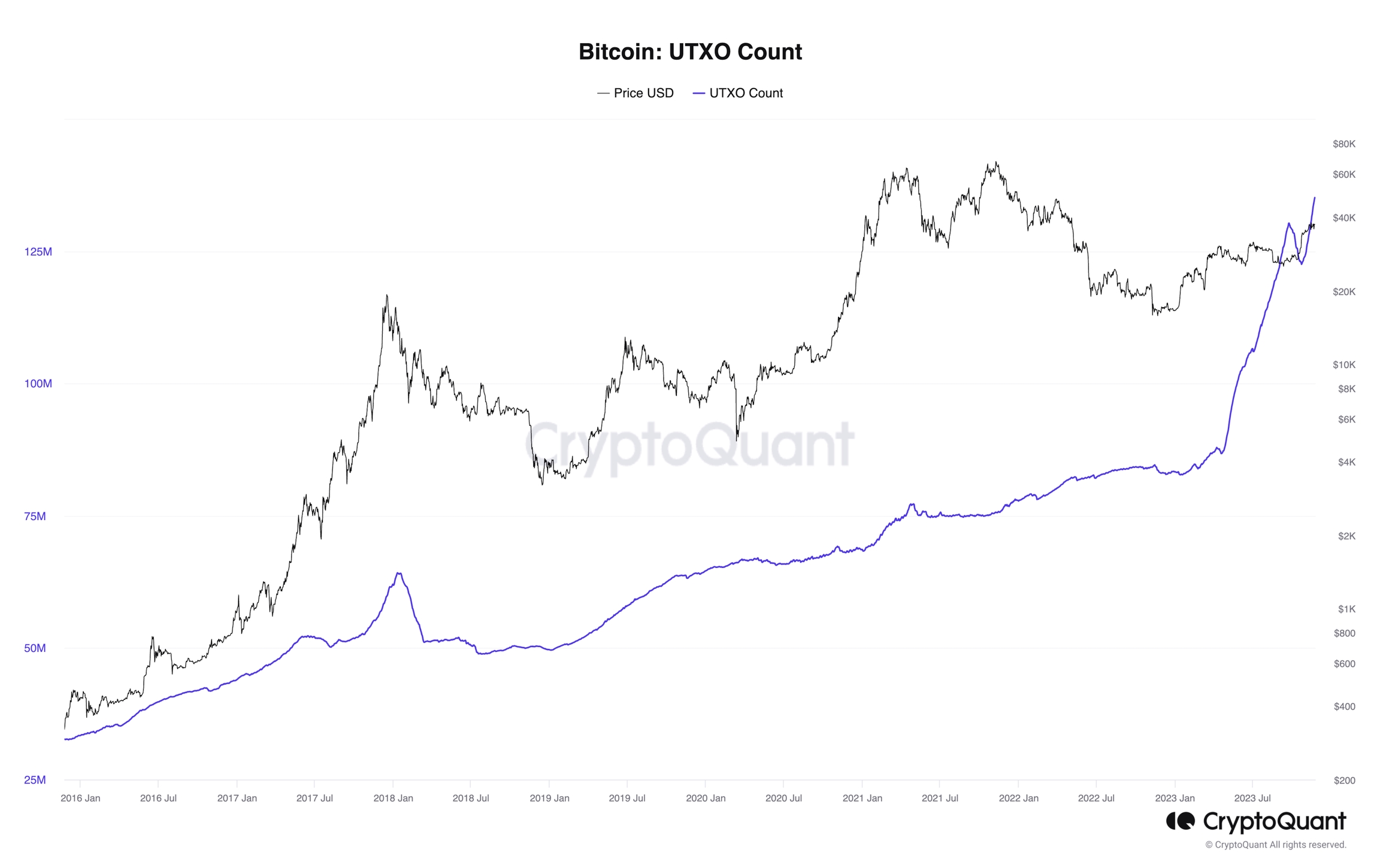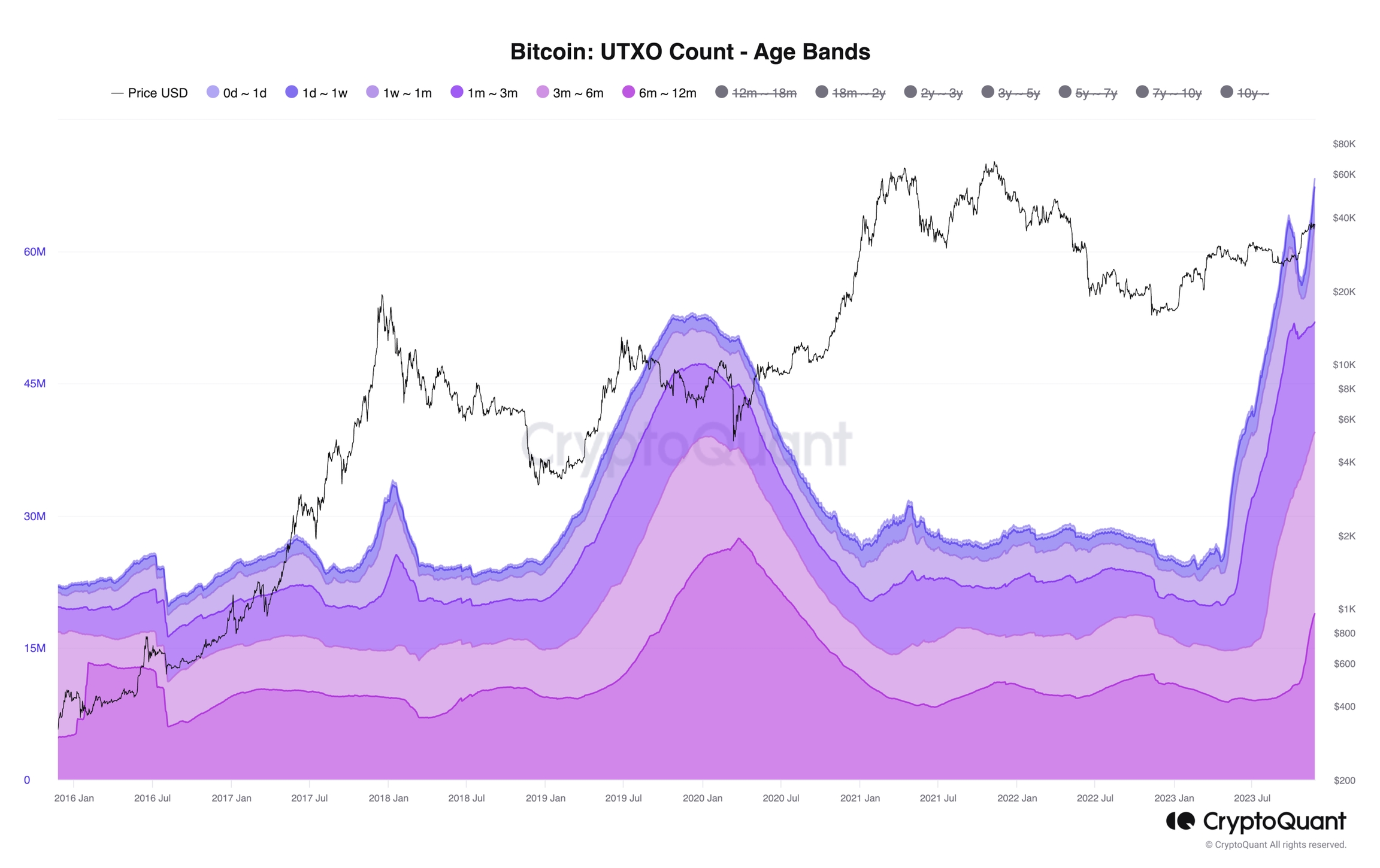What is a UTxO?
Unspent Transaction Output (UTxO) is a fundamental blockchain concept, representing received cryptocurrency in your wallet. It ensures transparency & security by tracking each unit's origin & status.
UTxOs as Cash Equivalent

An Unspent Transaction Output (UTxO) represents a certain amount of bitcoin that has been authorized by a sender and is available to be spent by a recipient. Unlike account-based transactions where you can send exactly 5 BTC to another person's account, Bitcoin uses UTxOs which can be comparable to using physical cash.
Let's imagine that you have a Bitcoin balance of 10 BTC and have to pay 5 BTC for a purchase. In order to pay 5 BTC by sending a UTxO, you will need to pay over or the same amount as the price, similarly to cash.
For example, Think of your wallet as having different-sized compartments for your Bitcoin, each representing a specific Unspent Transaction Output (UTxO) from past transactions. Consider these compartments as follows:
Big Compartment (10 BTC UTxO)
Medium Compartment (5 BTC UTxO)
Small Compartment (4 BTC UTxO)
Tiny Compartment (3 BTC UTxO)
Now, when you need to make a Bitcoin transaction of 5 BTC, it's like choosing which UTxO compartments to use:
Option 1: Overpay and Get Change
Use the Big Compartment (10 BTC UTxO) and get change (new UTxOs) of 5 BTC.
Combine the Medium and Small Compartments (9 BTC UTxO) and get change of 4 BTC.
Combine the Small and Tiny Compartments (7 BTC UTxO) and get change of 2 BTC.
Option 2: Pay Exactly What's Needed
Pay with the Medium Compartment (5 BTC UTxO) exactly, with no change required.
This way, your Bitcoin address, or wallet operates like an organized set of UTxO compartments, offering flexibility in how you handle your Bitcoin transactions.
Note
Minimum Payment Requirement
To ensure a smooth transaction, keep in mind that the payment should be a minimum of 5 BTC or more.
Change in the Form of Independent Compartments
The change you receive back operates like getting a new, independent compartment in the form of Unspent Transaction Output(s) (UTxO(s)).
UTxO vs. Cash:
Think of UTxO transactions like splitting cash into different pieces. Once a UTxO is created, it can't be divided further, similar to cash. Unlike cash, which has fixed denominations, UTxO(s) can represent any amount of BTC, akin to writing a flexible check.
Fees for Recording Transactions:
Remember, a crypto transaction output includes an associated transaction fee, paid to miners who secure and record a particular transaction on the blockchain.
Understanding these key points makes navigating Bitcoin transactions as easy as managing different-sized compartments in your wallet.
UTxOs as Check Equivalent
UTxO are created and destroyed
When UTxOs are used in a previous transaction output to pay or transfer, it is no longer a formerly valid UTxO. Just like checks can be used only once, UTxO work the same way. When there is a UTxO transaction out from the wallet where they were stored, they are referred to as 'destroyed'.
Upon destruction of a UTxO, the creation of a UTxO usually takes place as transactions can result in the process of receiving change(s). To sum up, the creation and destruction of UTxOs take place when any UTxOs move out of a wallet in the transaction process.
Every UTXO is a one-time-use entity and must be spent in its entirety. Each output corresponds to a single transaction input, meaning one input can utilize only one output from a previous transaction.
Age of UTxO

After the creation of new UTxOs, UTxOs stay in the wallet dormant and the days it stays dormant are documented. This is possible due to the blockchain system of inscribing the timestamp of each transaction and the time of the block containing that transaction was written and recorded.
Thanks to the feature of a UTxO's age, various indicators and data have been created to draw additional insights into the activity of the underlying blockchain. There are many ways of using such ages, including:
Focusing on the 'alive' days of certain or all UTxOs
Focusing on the destroyed days of certain or all UTxOs
Comparing each price at the moment of creation and destruction of UTxO(s)
Why UTxO is important in Bitcoin and Crypto
The Unspent Transaction Output (UTxO) model plays a critical role in crypto, offering a transparent and efficient way to handle transactions. Let's delve into the essential aspects that make UTxO indispensable.
Ensuring Transaction Integrity:
When initiating a new transaction, UTxO acts as a guardian, verifying that coins are spent only once. This prevents fraudulent practices such as double-spending.
Paving the Way for Future Transactions:
The cyclic nature of UTxO ensures that every spent coin becomes a UTxO for subsequent transactions, establishing a reliable foundation for the continuous flow of digital transactions.
Transaction Fees and UTXO:
Transaction fees are inherently linked with UTxO. Each time a UTxO is spent, a nominal fee is levied, contributing to the incentives for miners that validate transactions.
Simplifying Transaction Verification:
UTxO simplifies the verification process by providing a straightforward method for validating transactions. By inspecting existing UTxOs, the network efficiently ensures the legitimacy of transactions.
Understanding UTxO is akin to unraveling the architectural foundation of cryptocurrency transactions. It stands as a vital component, fostering security, trustworthiness, and seamless functionality in the digital currency landscape.
Bitcoin UTXO Set Simplified
In Bitcoin, the Unspent Transaction Output (UTXO) set is like a snapshot of all available, unspent transaction outputs. Each Bitcoin node actively maintains this set, a crucial piece in the cryptocurrency puzzle.
Here's the breakdown:
UTXO Set Composition: The UTXO set encompasses all unspent outputs, constantly updated by each Bitcoin node. These outputs represent bitcoins that have not been used in subsequent transactions.
Node Responsibilities: Bitcoin nodes, specifically full nodes, keep a copy of the UTXO set to efficiently validate transactions. This way, they don't need to scan the entire blockchain for every transaction verification.
Technical Nomenclature: Technically, these sets are known as the "chainstate" and find their home in the chainstate data directory of each node. As new blocks are added to the blockchain, the chainstate updates, keeping track of spent and newly generated UTXOs.
In essence, every node in the network maintains an identical copy of the UTXO set in its local database.
Last updated
Was this helpful?